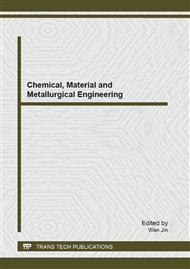p.114
p.118
p.123
p.128
p.132
p.137
p.142
p.147
p.155
Design-Expert Optimization of Skin-Care Material Fabrication Process
Abstract:
Skin-care functional material was mainly produced by three aftertreatments, namely carboxylic acid, alkali and sericin. The emphasis of this study lies in the optimization of material fabrication process, which was developed based on Plackett-Burman design to determine the best impact factor for optimum skin-care effect. The experiment was carried out using Design-Expert 8.0.5 statistical tool. The results of optimization showed that moisture character has been improved markedly and the most 3 significant factors were selected from 6 impacts on moisture rate. This research suggested that fabrics with amino acids own the quality of skin-care effect, which moisture rate has been improved. Plackett-Burman design can successfully sift dominant factors, accordingly confirm the feasibility.
Info:
Periodical:
Pages:
132-136
Citation:
Online since:
August 2013
Authors:
Price:
Сopyright:
© 2013 Trans Tech Publications Ltd. All Rights Reserved
Share:
Citation:


